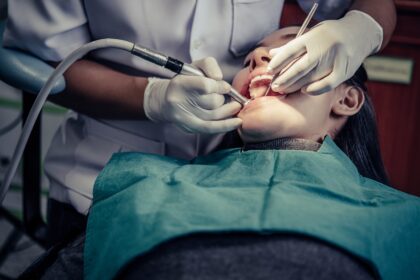Introduction: Redefining the Future of Orthopedic Healing
The world of orthopedic surgery is evolving faster than ever. Traditional approaches that relied heavily on mechanical repair are giving way to biological innovation. At the heart of this transformation lies orthobiologics—a groundbreaking field that combines the power of biology with modern medical science to regenerate tissues, accelerate healing, and reduce recovery time.
Orthobiologics are reshaping how orthopedic surgeons approach injuries, fractures, and degenerative conditions. Instead of simply repairing damage, these biological treatments stimulate the body’s own regenerative capabilities to restore natural function. This shift marks a new era in orthopedic care—one focused not only on fixing the body but on helping it heal itself.
What Are Orthobiologics? The Science Behind Regeneration
Orthobiologics are biological materials derived from the human body or natural sources used to promote healing in bones, muscles, ligaments, and tendons. They work by enhancing the body’s innate repair mechanisms, speeding up tissue regeneration and recovery.
Some of the most widely used orthobiologic materials include:
- Platelet-Rich Plasma (PRP)
- Stem Cells (Mesenchymal Stem Cells – MSCs)
- Bone Marrow Aspirate Concentrate (BMAC)
- Hyaluronic Acid
- Growth Factors and Biologic Scaffolds
When used during surgery or as standalone therapies, these materials can transform recovery outcomes—bridging the gap between medical innovation and natural healing.
How Orthobiologics Work: Enhancing Natural Healing Processes
The human body is designed to heal itself. However, in many cases—such as severe trauma, sports injuries, or age-related degeneration—its natural healing capacity becomes limited. Orthobiologics work by boosting this biological process, providing the body with the tools it needs to repair damaged tissue more effectively.
For instance:
- PRP therapy delivers concentrated platelets that release growth factors to stimulate tissue repair.
- Stem cells can transform into bone, cartilage, or muscle cells, rebuilding damaged areas from within.
- BMAC provides a rich mixture of regenerative cells and proteins that accelerate bone and soft tissue recovery.
By targeting the source of the problem, orthobiologics reduce inflammation, promote new cell growth, and restore tissue function—helping patients recover faster and with fewer complications.
Major Types of Orthobiologic Treatments
1. Platelet-Rich Plasma (PRP) Therapy
PRP therapy involves extracting a small amount of the patient’s blood, processing it to concentrate the platelets, and then injecting the solution into the injured site. The growth factors in platelets enhance cell repair and regeneration. PRP is widely used to treat tendon injuries, ligament sprains, and osteoarthritis.
2. Stem Cell Therapy
Stem cells are undifferentiated cells capable of becoming various tissue types. In orthopedics, mesenchymal stem cells (MSCs) are harvested from bone marrow or adipose (fat) tissue and injected into the damaged area. This promotes the growth of new bone, cartilage, or muscle—helping patients with degenerative joint diseases or chronic injuries.
3. Bone Marrow Aspirate Concentrate (BMAC)
BMAC is derived from the patient’s bone marrow and contains a high concentration of stem cells and growth factors. It’s used to accelerate healing in complex fractures, spinal fusion, and soft tissue repair.
4. Hyaluronic Acid Injections
Hyaluronic acid, a naturally occurring joint lubricant, helps reduce pain and improve mobility in patients with arthritis. It cushions the joint and supports smoother, more flexible movement.
5. Growth Factors and Biologic Scaffolds
Growth factors stimulate cell activity and tissue formation, while biologic scaffolds provide a framework for new tissue to grow. Together, they are used in bone grafts, tendon repairs, and joint reconstruction procedures.
Advantages of Orthobiologics in Orthopedic Surgery
1. Accelerated Recovery and Healing
Orthobiologics stimulate the body’s repair systems at the cellular level, leading to faster healing compared to conventional methods.
2. Reduced Need for Invasive Surgery
Many patients benefit from minimally invasive orthobiologic treatments, which can eliminate or delay the need for major surgical procedures like joint replacements.
3. Lower Risk of Complications
Since most orthobiologic materials are derived from the patient’s own body, the risk of infection or immune rejection is minimal.
4. Long-Term Pain Relief
Unlike painkillers or temporary treatments, orthobiologics address the root cause of tissue damage, offering lasting relief and restored mobility.
5. Enhanced Tissue Regeneration
These treatments don’t just repair—they regenerate. By encouraging new tissue growth, orthobiologics help restore strength and function to the injured area.
Applications of Orthobiologics in Modern Orthopedics
Orthobiologics are being used across a wide range of orthopedic treatments and procedures, including:
- Sports Medicine: For ligament tears, muscle injuries, and tendonitis in athletes.
- Joint Preservation: Helping manage osteoarthritis and delaying the need for joint replacement.
- Spinal Surgery: Enhancing fusion rates and reducing recovery time after spinal procedures.
- Fracture Management: Promoting bone regeneration in slow-healing or nonunion fractures.
- Cartilage Restoration: Repairing worn or damaged cartilage in knees, hips, and shoulders.
These applications demonstrate the versatility of orthobiologics and their growing importance in both surgical and non-surgical orthopedic care.
Orthobiologics vs. Traditional Orthopedic Approaches
Traditional orthopedic methods often rely on mechanical repair—metal plates, screws, and grafts—to stabilize injuries. While effective, these methods do not directly influence biological healing. Orthobiologics, on the other hand, enhance the body’s own healing mechanisms, allowing for more natural and long-lasting recovery.
When combined with surgical precision, orthobiologics create a synergistic approach—offering both structural stability and biological regeneration. This combination represents a significant leap forward in the evolution of orthopedic medicine.
The Future of Regenerative Orthopedics: Where Innovation Leads
The future of orthopedic surgery is undeniably regenerative. As research progresses, new technologies are emerging to refine and enhance orthobiologic therapies. Among them are:
- 3D Bioprinting: Creating bone and cartilage structures using patient-derived cells for personalized implants.
- Gene Therapy: Modifying genetic material to stimulate faster and stronger tissue regeneration.
- Nanotechnology: Delivering orthobiologic substances precisely at the cellular level.
- AI-Driven Personalized Treatments: Using artificial intelligence to design customized regenerative solutions for individual patients.
These advancements will make orthobiologics even more effective, predictable, and accessible—ushering in an era where orthopedic healing is not only faster but biologically superior.
Conclusion: Transforming Orthopedic Care Through Regeneration
Orthobiologics have revolutionized how orthopedic surgeons think about healing. No longer confined to mechanical repairs, modern orthopedics is now entering an era of biological transformation—one that harnesses the body’s natural ability to regenerate and restore itself.
From sports injuries to degenerative diseases, orthobiologic therapies are empowering patients with faster recovery, reduced pain, and improved quality of life. The integration of biology, technology, and surgical expertise marks a profound shift in medical history—one that defines the true future of orthopedic surgery.



